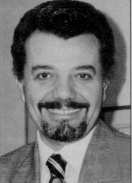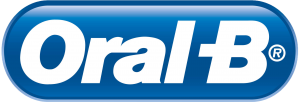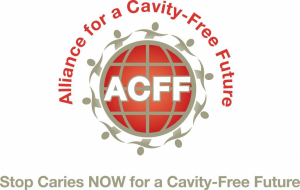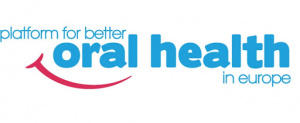
NEWSLETTER Number One March 1997
Message from the President
Maxine in Paediatric Dentistry - Present and future
Specialists in Paediatric Dentistry - Present and future
Abstracts
Membership
Boosting egos young and old
Annual Meeting of the Gesellschaft Fur Kinderzahnheilkunde Und Primarprohlaxe
Advertising
Editors
|
Message from the President.
It has already been more than six months since the last communication we had at the latest Council Meeting and after my inauguration as President. I had promised to work and concentrate my efforts in two directions: one being the improvement of the Academy's running in terms of communication by having more Council and Executive Committee meetings as well as developing an interaction via E-mail and the Internet. The other direction was to approve the Standing Orders so that there would be guidelines to follow in the future. At the start of the New Year it seems that 1997 is going to be a very active and promising year for our Academy since some of the promises are already completed and some others are on the way to completion. As you know the pending tasks and the priorities of the Academy are many and every year more are added. This confirms the need for the Board to meet regularly and work for the Academy's benefit more often. One of the promises was to be able to have an Executive Committee meeting in Athens, provided it would be financed or sponsored. I am happy to inform you that this event did occur in February. The meeting was an extension of a Scientific Committee, and it was a good opportunity for all of us to discuss scientific matters but also, as Executive Board, to get closer and promote our Academy's business by talking in a relaxed schedule, without the time pressure which had affected us in the past. The successful outcome of the process involving EAPD and the Hellenic Society of Paediatric Dentistry was an excellent collaboration of the people involved and was possible because of the generous contribution of the invited speakers: Professor Goran Koch, Professor Martin Curzon and Professor Luc Martens. According to the Constitution, members of the Council should meet every year. Since there was no other common Scientific event or congress where most of the Council Members would be present, we had to find a way to have a Council Meeting in 1997 (June/July) somewhere in Europe where most of the councillors could come or preferably be invited. In order for the second to happen, financial support would be needed. This would only be given if a scientific subject, to be discussed and producing as a result a consensus directive for all our members, were included on the Agenda. This was the initial idea I proposed at the last Council Meeting in Bruges. Now the idea has become more meaningful and has more chance of becoming a reality, especially after the story of the boy who received a £1000 goodwill payment by a major toothpaste company in England, raising once again in most European countries the question of fluoride use and safety. The public is worried and constantly asking about its safety and usefulness while visiting private practices or public dental health clinics. This is certainly happening in my country and I would imagine it happens in other European countries as well. As Paediatric Dentists we are the main primary oral health providers for children, and as such, responsible for developing recommendations and guidelines for our members and the public. It is time to intervene, re-evaluate, reconsider and reassure the public about fluoride safety or inform them appropriately if something changes. This is our responsibility. Next February the Board can discuss this issue and come up with a framework for such recommendations which might be subjects for discussion and approval at the Council Meetings next June or in a parallel scientific meeting – a workshop entitled `Toxicity of Fluoride Dosage and Use' which could take place at the same time. The results of this, the Council Meeting can approve and accept as Oral Hygiene Policy or Consensus Guidelines for Europe. Of course the whole issue and organisational details will be distributed to all members after finalisation. After some preliminary discussions with interested companies we finally made an agreement with one of them to kindly sponsor the two events. I hope that very soon you will be informed of the details and be invited for such a Council here in Athens. The most desirable dates are 27th to 29th June 1997 with two nights needing to be spent here. Regarding the other commitments, some of which were the development of an EAPD Membership Directory, the production of an ID card and a Certificate, along with Councillor questionnaires are almost ready and they are going to be presented to the Executive Committee Meeting. After their approval they will be implemented and circulated to you. The Education Committee and the Quality Assurance group are working intensively and I hope that they will have the first draft on Accreditation and Quality Assurance for discussion and approval at the Council Meeting. Another major task, which has always been a major priority for our Academy is our Speciality's recognition. We have always incorporated this task in our goals and we have discussed the issue several times. Now, I think the time has come to stop being theoretical and to become more practical. In order to be successful, we have to proceed cautiously but at the same time, effectively. We should have a strategy and a strategic plan to follow. But for this let me come back to you with more details in the next issue. Constantine J Oulis |
|
Maxine Pollard 1954-1997
It is with great regret that we report the sudden and tragic death of the Editor of the EAPD Newsletter, Maxine Pollard. She was recently promoted to Senior Lecturer (equivalent to Associate Professor) in the Department of Paediatric Dentistry at the University of Leeds and her career in our speciality was developing rapidly. Her bright and outgoing personality meant that she was loved by all who knew her and she was able to encourage and teach many in the skills of Paediatric Dentistry. Maxine entered an academic career rather later than most as she had raised a family and carried on a general dental practice with her husband John for a number of years. However, she then decided to take up a career in Paediatric Dentistry with a long term view of specialist practice. However, once started on her Master's degree, the academic `bug' took hold and she decided to stay on as a teacher. In this she proved to be most effective as well as in her selected area of research of the cariogenicity of foods and nursing caries. Within only seven years she made many contributions to the paediatric dental literature, organised conferences, gained research grants in several areas and then two years ago was appointed Director of the Leeds Postgraduate training programme. Her child patients loved Maxine and she was very popular both with them and their parents. She was an excellent role model for the young undergraduate dentist in the management of children. Her great sense of humour and joie de vivre endeared her to her colleagues at home and abroad. She was great to be with at meetings both scientifically and socially. She loved the mental stimulation and social interaction of the EAPD and ORCA Congresses as well as other scientific meetings. Maxine will be very sadly missed by us all.
|
|
SPECIALISTS IN PAEDIATRIC DENTISTRY
The present situation and indicators for the future. Active discussions and planning for specialisation are being carried out by members of The Academy in various countries of Europe. It has always been one of the main aims of The Academy to ensure recognition and growth in the number of specialists in Paediatric Dentistry throughout Europe. This is a slow process which, in some countries, is already in place, in others will come about shortly and in others seems not to have even started. In these last countries it is not for want of trying by those committed to our speciality but rather opposition by other dental interests. This may be from general dental practitioners, who fear loss of business, but also from existing specialists of other disciplines in dentistry. At the present time our speciality is recognised in Sweden and Norway. It is a hospital based speciality in Ireland and the United Kingdom. Within the European Union countries, therefore, it is only recognised in one (Sweden) and there is an EU requirement for two countries to recognise a speciality for the EU to authorise a speciality. We are now near to that happening. In the United Kingdom agreement to recognise dental specialities for private practice, by the governing body for dentistry, the General Dental Council, is under consideration and a committee (Task Force) is meeting to draw up the guidelines for Paediatric Dentistry. Recognition for specialists to practice their speciality outside of the hospitals is close to agreement. Within a short time, perhaps within the next year, we hope to see Paediatric Dentistry included as a recognised speciality. The EAPD will need to be ready to use the UK recognition to then make representations to the EU for Paediatric Dentistry to be a speciality within the EU. By the time of our Congress in 1998 we might well be able to attain our first objective. Recognition of the speciality is however only a first step. Training programmes will be needed and marketing of the need for specialists nationally and locally throughout Europe and within individual countries. It is interesting that our sister organisation, the American Academy of Paediatric Dentistry (AAPD) has just announced a drive to recruit another 2,500 specialists to maintain a target ratio of 5.2 specialists of Paediatric Dentistry per 100,000 children. A ratio of approximately 1:20,000 is a target we can also use. To put this into perspective, we can use the example of the United Kingdom to show how many will be needed. The UK has a population of about 58 million and each year there are about 695,000 children born. Taking the age range of 0 to 16 years this means 11. 12 million children and the target ratio would indicate a need for 556 specialists. Today there are approximately 50 made up of hospital consultants, specialist practitioners and community dental service specialists. The numbers are difficult to determine accurately because some dentists do not confine their practice entirely to children. Nevertheless these UK data indicate the size of the task before us - a tenfold increase in numbers. With children comprising about 20% of a population and Europe having well over 250 million people, we have to think of a target of at least 2,500 specialists. This is what we should be aiming for. We do not know how many specialists in Paediatric Dentistry we have at present. The Active members of our Academy number about 250, but not all existing specialists in Europe belong. Taking an optimistic view and doubling our members, we could estimate that at present there may be 500. So what next? As it is the New Year and it is usual to make New Year's Resolutions the Academy's Resolution for 1997 should be to recruit all the specialists already in Europe to join the EAPD, to drive forward recognition of Paediatric Dentistry in the EU with a target date of May 1998 and set an objective of 2,500 European Specialists within 5 years. Martin Curzon |
|
ABSTRACTS
by Stephen Fayle The relationship between digit sucking and behaviour problems: a longitudinal study over 10 years. Mahalski PA, Stanton WR. This study was carried out as part of a larger longitudinal investigation of child health in New Zealand.
A study of the development of the permanent dentition in very low birth weight children. Kim Seow W. This study investigated dental development and the prevalence of enamel defects in very low birth weight (<1500g, VLBW) children. 55 caucasian children with a history of low birth weight (mean birth weight 1203g) aged between ages 5.5 years and 9.9 years were dentally examined and panoramic dental radiographs taken. A group of normal birth weight children matched for race, sex and age was used as a control.
Success of electrofulguration pulpotomies covered by zinc oxide and eugenol or calcium hydroxide: a clinical study. Fishman SA, Udin RD, Good DL, Rodef F. This study investigates the efficacy of primary molar pulpotomies where electrofulguration was used to produce haemostasis. In this technique, following mechanical amputation of the pulp, an electric current is applied to each pulp stump for 1-2 seconds via an electrode positioned about 1mm above the tissue, producing an electrical arc. The teeth were then randomly assigned into one of two groups, the stumps then being dressed with either zinc oxide and eugenol (ZOE) or calcium hydroxide (COH). All teeth were coronally restored with stainless steel crowns. Teeth were evaluated clinically and radiographically after 1, 3, and 6 months by two independent examiners. After six months the clinical success of the ZOE and COH groups was 77.4% and 81.0% respectively. The corresponding radiographic success was 54.6% and 57.3% respectively. These differences were not statistically significant.
Bacteraemia in conjunction with endodontic therapy Debalian GJ, Olsen I, Tronstadt L. Previous studies have suggested that endodontic procedures confined to within the root canal do not carry a risk of transient bacteraemia. This well designed study aimed to characterise any oral microorganisms believed to have spread from the root canal into the blood stream during and after endodontic therapy of teeth with asymptomatic apical periodontitis. Microbiological samples were taken under aseptic conditions from the root canals of 26 single rooted teeth in 26 subjects. In half these patients (Group 1 ), following determination of working length, fme reamers were deliberately inserted to 2 mm beyond the apex. In the other 13 subjects (Group 2) instrumentation ended 1 mm short of the apex. Blood samples taken during instrumentation and 10 minutes after treatment. Anaerobic organisms were isolated from all root canals. In 7 patients from Group 1 and 4 patients from group 2, bacteria with identical biochemical and antibiogram profiles to those isolated from root canals were isolated from blood samples. This strongly suggests that the micro-organisms isolated from blood samples had the root canal as their source and that bacteraemia may follow both extra and intra-canal endodontic preparation
|
|
|
|
MEMBERSHIP
Membership of The Academy stands at approximately 305, comprising Active, Associate, Honorary and Student Members. Over the past year the total membership has remained constant at around 300. Some original members have left and new members have been recruited. The number of student members has grown as the various training programmes in Europe nominate their students for membership. This is a good source of recruitment as most of the student members do transfer to Active membership on graduation. The number of overseas members, from outside of Europe, has also grown and we now have members, at the Associate level, in various countries including Israel, Iran, United Arab Emirates, Turkey and the USA
|
|
BOOSTING EGOS YOUNG AND OLD
As practising dentists we usually only start paying attention to a child's behaviour when a problem arises in treatment or when progress is blocked. Yet children often send out messages beforehand. There are usually signs when there's likely to be any trouble. So if we have the right tools ready to deal with it we can support the child and continue the treatment smoothly. And the sort of support usually needed is moral support: a few words can make the difference between success or failure. One way of providing support is to boost the patient's ego. It is often used in hypnotherapy to help a person through a difficult period, or to provide support when faced with a tough decision. To provide this sort of support to children, often all we need to do is keep a careful eye on the child and a close watch on what happens during the treatment. It was five-year-old Donavan's second visit to the dental department. The previous year treatment had been quite a shock and his dentist referred him to the pedodontic department. We let him get used to the treatment site gradually and the next session we successfully restored a tooth. At the follow-up he headed straight for the chair and lay back waiting for his local anesthesia. Everything was quiet and the dentist sat ready to give the shot when the stress became too much of a burden for Donovan, `I'm a little bit scared', he said timidly. His dentist usually answered in a repressive-tolerant way, like `I know, and I think you are right, but together we can do it.', and then continued talking while carrying on. Often, children only need to say what's on their mind and to show that they feel uneasy. With a little support it's soon over. This time the dentist took another trail, inspired by the pink socks Donovan happened to be wearing. Actually, it wasn't just pink, it was the kind of pink that strikes you in your face when you even try to look at it. He stopped, hesitated and stared out of the window a while. `This morning' he began, addressing no-one in particular, least of all his patient, `This morning I was sitting on the side of my bed thinking. I did not feel too happy, and I thought to myself, `If I were to put on my pink socks today I' d feel a lot better and I'd be a lot happier.' And he glanced aside as if looking for support. `I always feel I can do anything when I wear my pink socks, I always feel strong and brave. I can do more, but I didn't have any pink socks this morning so I had to wear a different pair. That's just the way it is'. And then, turning to Donovan, `Shall we carry on?… Without a word the little mouth opened. Jaap Veerkamp |
|
EUROPEAN ASSOCIATION OF DENTAL PUBLIC HEALTH 26th & 27th September 1997 Cittadella - Padua Italy STRATEGIES IN PROMOTING ORAL HEALTH IN EUROPEAN COUNTRIES Further information: Dental Public Service |
|
21st to 23rd October 1998 |

 I
I

